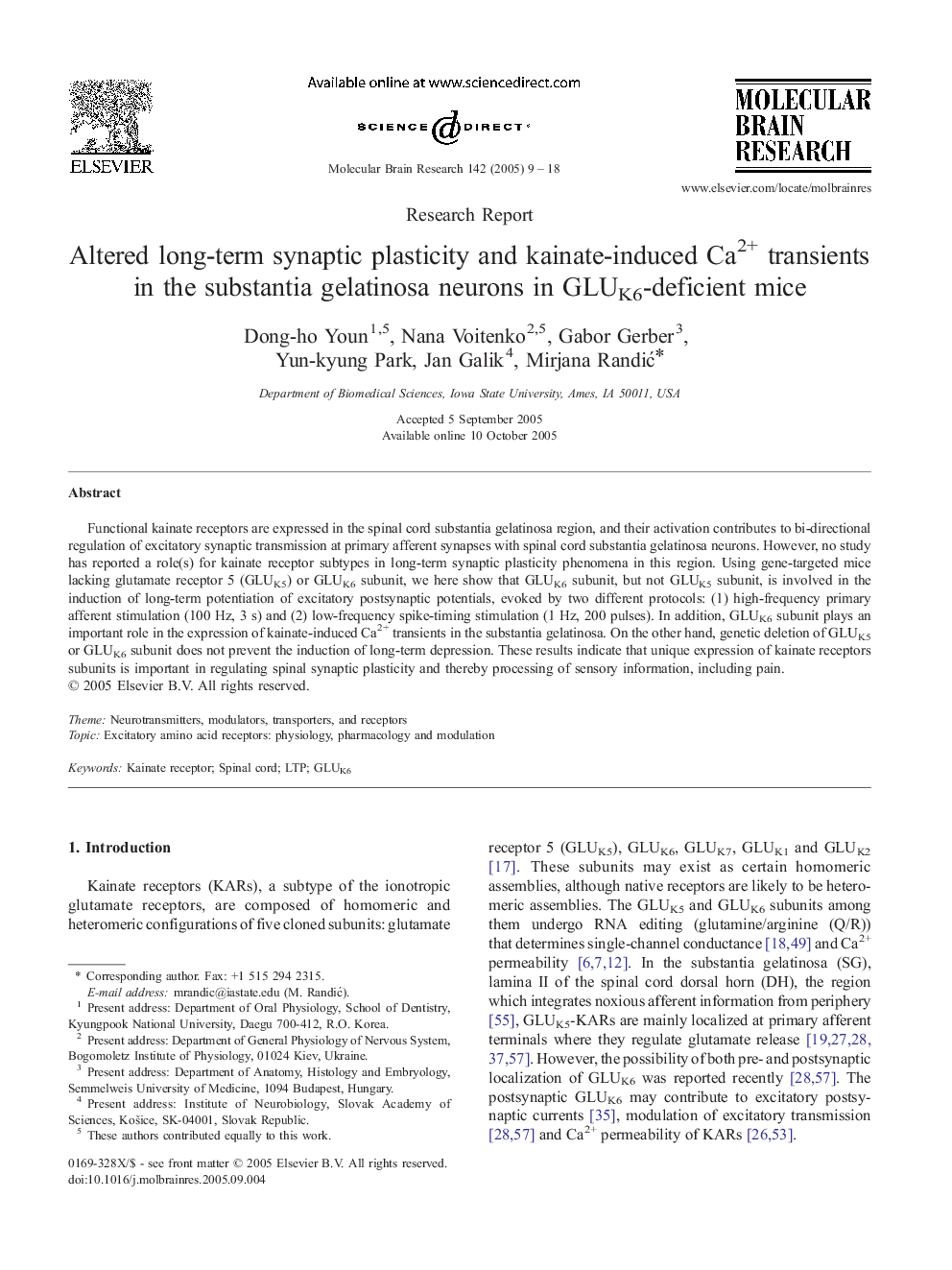| Article ID | Journal | Published Year | Pages | File Type |
|---|---|---|---|---|
| 9410569 | Molecular Brain Research | 2005 | 10 Pages |
Abstract
Functional kainate receptors are expressed in the spinal cord substantia gelatinosa region, and their activation contributes to bi-directional regulation of excitatory synaptic transmission at primary afferent synapses with spinal cord substantia gelatinosa neurons. However, no study has reported a role(s) for kainate receptor subtypes in long-term synaptic plasticity phenomena in this region. Using gene-targeted mice lacking glutamate receptor 5 (GLUK5) or GLUK6 subunit, we here show that GLUK6 subunit, but not GLUK5 subunit, is involved in the induction of long-term potentiation of excitatory postsynaptic potentials, evoked by two different protocols: (1) high-frequency primary afferent stimulation (100 Hz, 3 s) and (2) low-frequency spike-timing stimulation (1 Hz, 200 pulses). In addition, GLUK6 subunit plays an important role in the expression of kainate-induced Ca2+ transients in the substantia gelatinosa. On the other hand, genetic deletion of GLUK5 or GLUK6 subunit does not prevent the induction of long-term depression. These results indicate that unique expression of kainate receptors subunits is important in regulating spinal synaptic plasticity and thereby processing of sensory information, including pain.
Keywords
Related Topics
Life Sciences
Neuroscience
Cellular and Molecular Neuroscience
Authors
Dong-ho Youn, Nana Voitenko, Gabor Gerber, Yun-kyung Park, Jan Galik, Mirjana RandiÄ,
